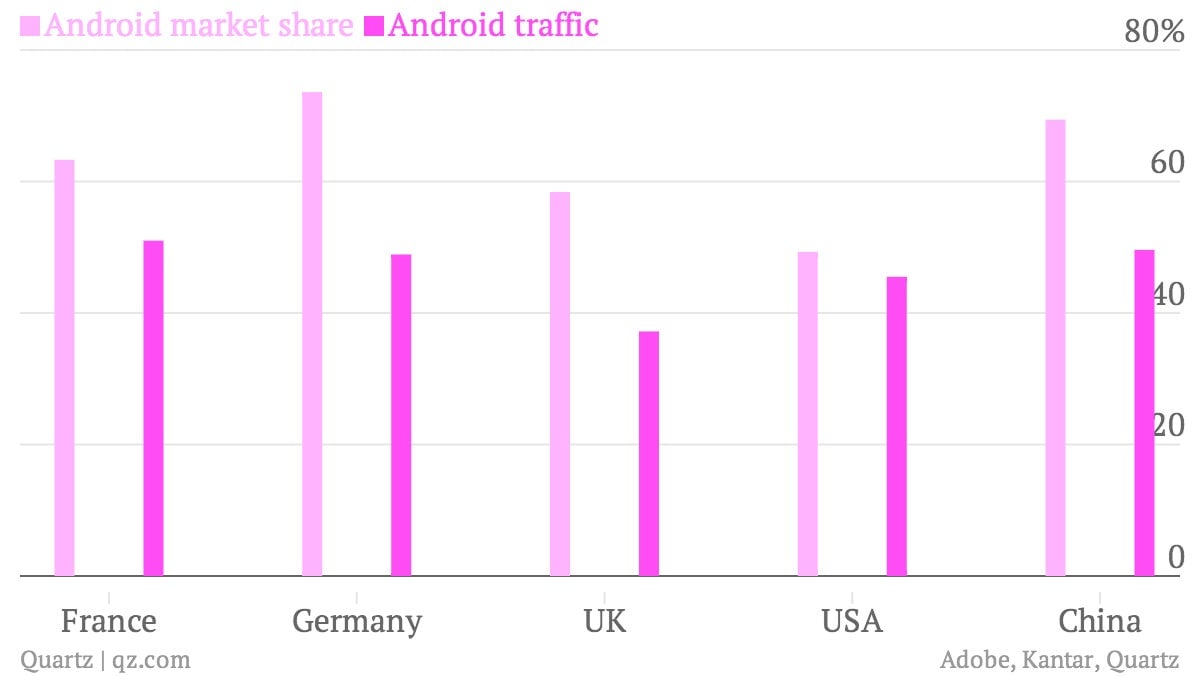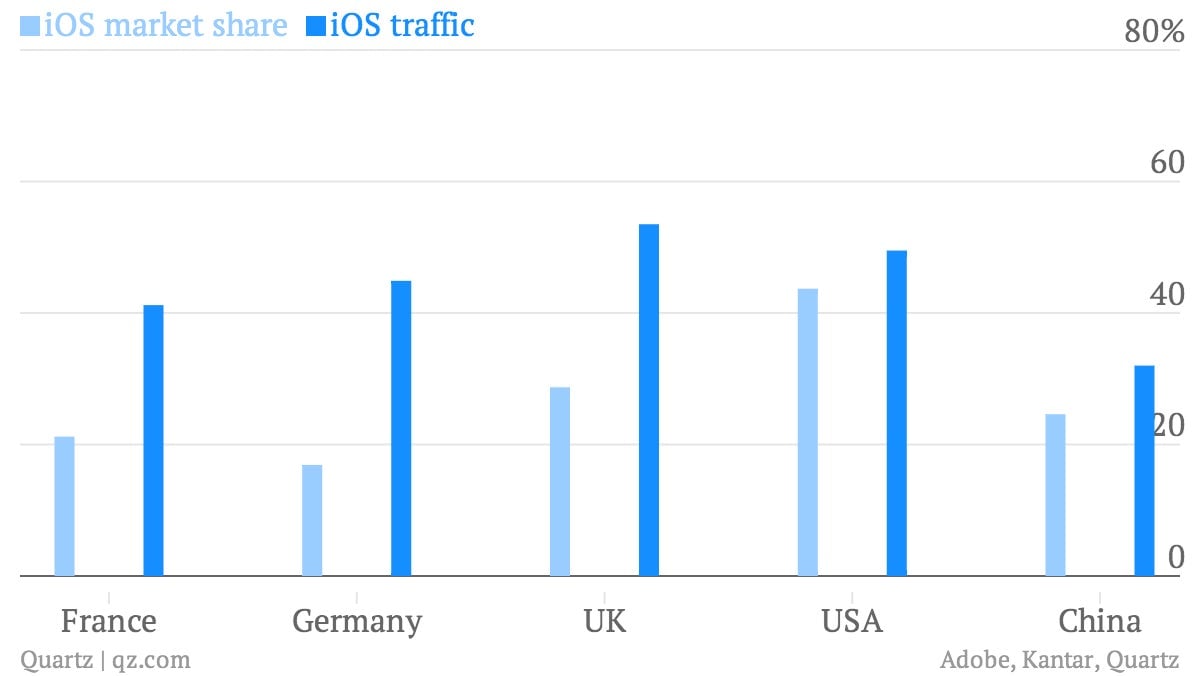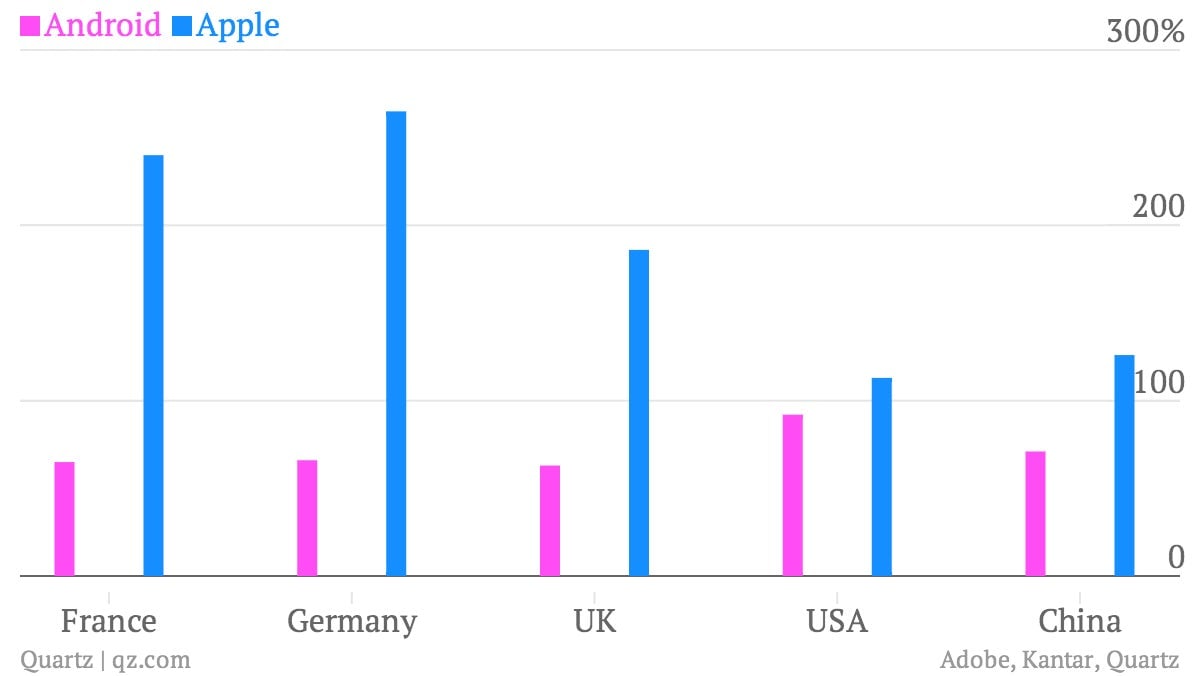Android might own 75% of the smartphone market but all the action is still on the iPhone
It is hardly disputable that Android has a clear lead over iOS in terms of the number of people using it. Just yesterday, a report put its worldwide market share in the first quarter of this year at nearly 75% of all smartphone sales. That number is worth looking at more closely. What are all these Android owners doing with their phones?

It is hardly disputable that Android has a clear lead over iOS in terms of the number of people using it. Just yesterday, a report put its worldwide market share in the first quarter of this year at nearly 75% of all smartphone sales. That number is worth looking at more closely. What are all these Android owners doing with their phones?
Here’s Android’s market share alongside the web traffic it generates from its smartphones in a few large countries:

Now here’s the same for iOS—again, only on smartphones (not tablets):

As should be clear from the above charts, phones running iOS use much more data than those with Android. How much exactly?

That much. French Android-phone owners, for example, use only 65% of the data that their market share implies they should. Those running iOS use 240% as much. Germany is even more striking, at 66% and 265%, respectively. Only in the US do market and traffic share remotely resemble each other, though even there it’s a little off with 92% for Android and 113% for iOS.
What explains this disparity? It’s probably down to speed. Along with a few other elements, browsers are integral to the web experience. According to Steve Souders, Google’s head engineer for performance, surfing the web on smartphones is 30% faster than last year, thanks mostly to improvements in browsers. Unlike iPhones, which come pre-installed only with Safari, the broswer an Android phones comes with depends on the manufacturer. That means not all are as modern as users might like. (Moreover, some browsers, such as Opera Mini, compress traffic on their own servers before sending to the device, which could also have something to do with lower data usage.)
Another possible reason is that there are more Android phones running on the slower 2G network, a pre-cursor to 3G wireless. Speeds on 2G are frustratingly slow, especially if you have used a faster connection—though you probably wouldn’t notice if you haven’t. But there is simply less you can do on slower networks, not just because it’s too annoying to wait for a video to load, but also because there are only so many hours of the day to sit around looking at a buffer wheel. Apple hasn’t sold an iPhone without 3G in nearly six years.
So while it is true that Android phones vastly outsell iPhones, Apple users seem to be getting a lot more out of their devices. For now, at least. Many Android users are first-time buyers of smartphones. Their usage will increase as they get more comfortable with their devices. Others will switch from old models to newer ones with better hardware and software. Once that happens, the disparity should vanish.
Data on internet traffic can be found here (pdf), and on market share here. It’s worth mentioning that iPhones don’t consume more data in all countries. In Japan, for example, the picture is reversed, with web traffic from Android phones far exceeding market share, at 132%. Apple’s phones lag behind at 73%.